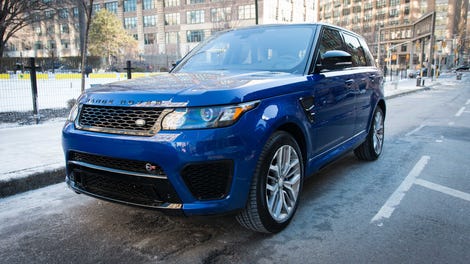You probably figured the 550-horsepower Range Rover Sport SVR could make a quick 0-to-62 time on pavement. But what about snow? Or the beach? Land Rover was curious too, and proud enough of the results to share them with the world.
Advertisement
Land Rover’s Stability Applications Leader Darren Jones got behind the wheel of an SVR on six distinct surfaces; a race track, a grassy field, a quarry, a snowy winter testing facility, a mud bog, and a beach to lay down stopped-to-100-kilometers per hour (62 mph) times running the SUV’s stock Michelin all-season 275/45 R21 tires.
According to Land Rover’s press release, the only change made to the vehicle for each “road” was an adjustment of its terrain-sensitive traction control system called Terrain Response 2. Basically, the system tweaks throttle input, wheel-slip allowance, power distribution and suspension height to set the SUV into the easiest configuration for a given surface.
Advertisement
Here’s the breakdown of how the Range Rover Sport SVR did according to Land Rover:
Tarmac: Rockingham Race Circuit – 0 to 62 mph in 4.7 seconds in “Dynamic” mode.
Grass: Land Rover Experience Centre, East of England – 0 to 62 mph in 5.5 seconds in “Grass, Gravel, Snow” mode.
Sponsored
Gravel: Quarry, South Wales – 0 to 62 mph in 5.3 seconds in “Grass, Gravel, Snow” mode.
Snow: Winter Testing Facility, Arjeplog, Sweden – 0 to 62 mph in 11.3 seconds in “Grass, Gravel, Snow” mode.
Advertisement
Advertisement
Mud: All-Terrain Testing Facility, South Wales – 0 to 62 mph in 6.5 seconds in “Mud And Ruts” mode.
Sand: Pendine Sands – 0 to 62 mph in 5.5 seconds in “Sand” mode.
I think this is the first time an automaker has offered up performance claims on six different bits of Earth, but it seems like a good precedent. Quick, somebody get me sprint times for a GT350 on the frozen Swedish tundra!















